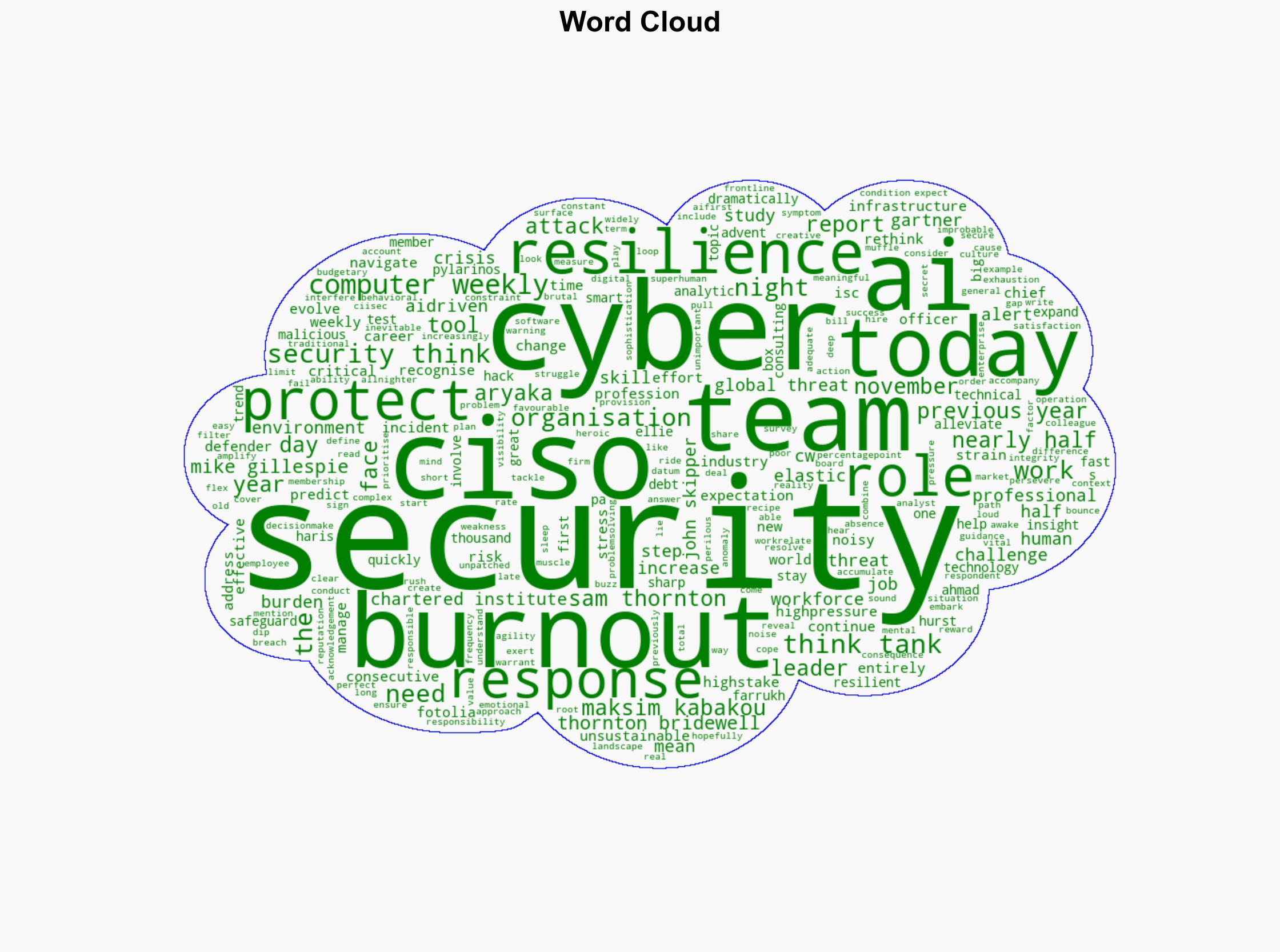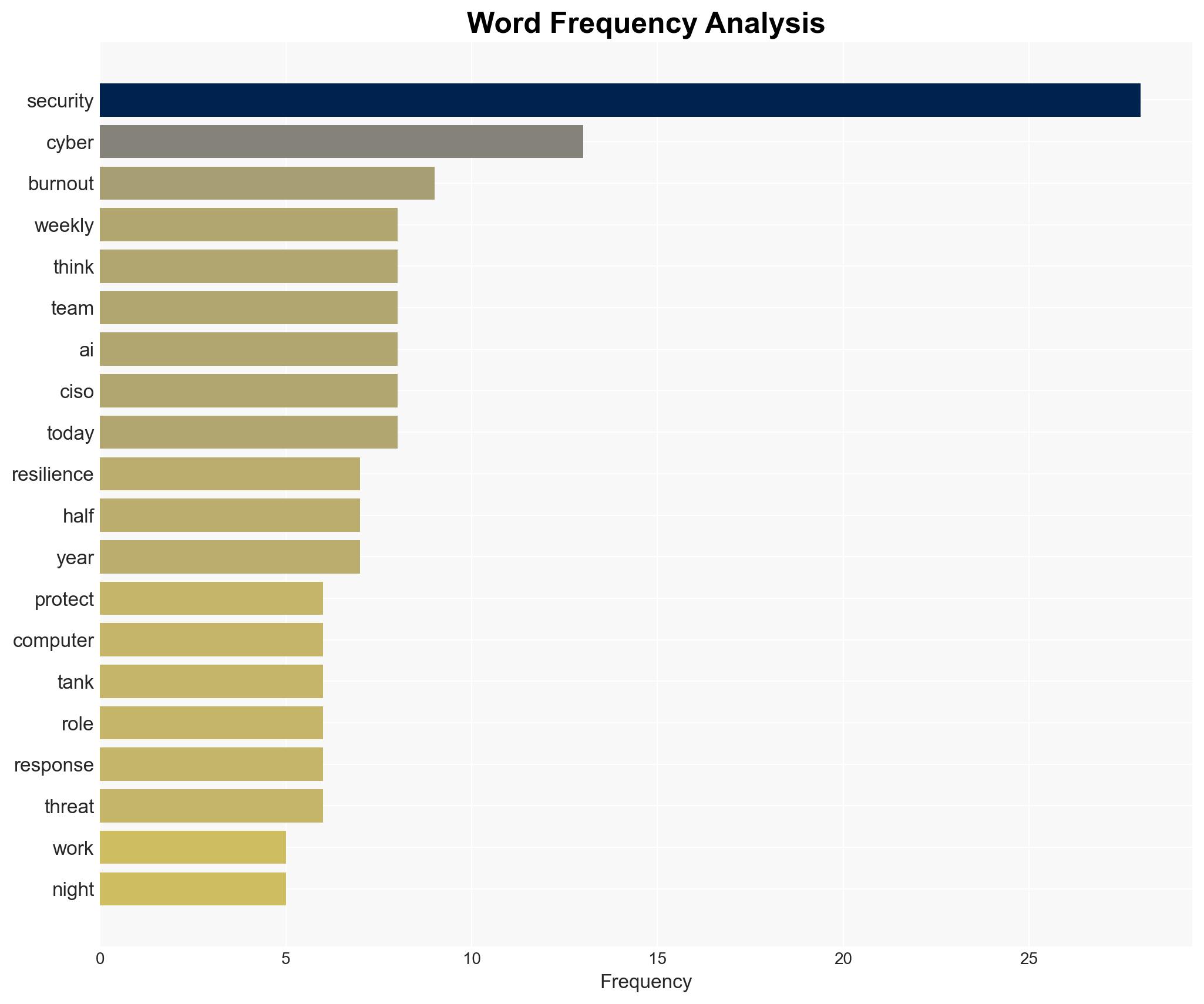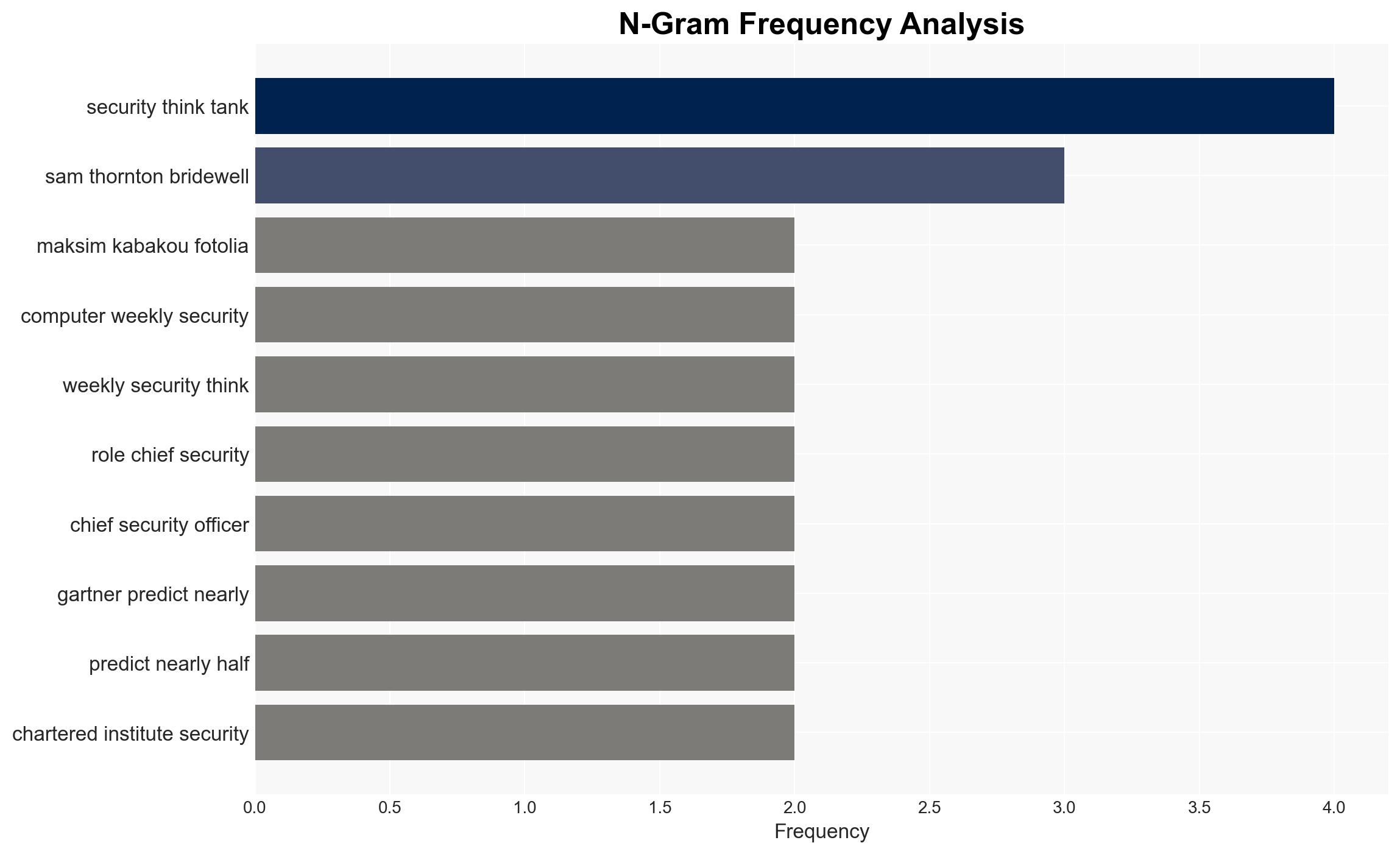Protecting the defenders Addressing cyber’s burnout crisis
Published on: 2025-11-21
AI-powered OSINT brief from verified open sources. Automated NLP signal extraction with human verification. See our Methodology and Why WorldWideWatchers.
Intelligence Report: Protecting the Defenders – Addressing Cyber’s Burnout Crisis
1. BLUF (Bottom Line Up Front)
The most supported hypothesis is that the cybersecurity industry is facing a systemic burnout crisis due to unsustainable work conditions and inadequate support structures. Confidence Level: High. Recommended action includes implementing organizational changes to enhance resilience and adopting advanced technologies to alleviate human workload.
2. Competing Hypotheses
Hypothesis 1: The burnout crisis in cybersecurity is primarily due to the increasing complexity and frequency of cyber threats, which demand excessive work hours and high-stress levels from cybersecurity professionals.
Hypothesis 2: The burnout crisis is largely a result of organizational and industry-wide cultural issues, such as inadequate support for mental health, poor work-life balance, and unrealistic expectations of cybersecurity teams.
Hypothesis 1 is more likely due to the direct correlation between threat landscape complexity and reported stress levels. However, Hypothesis 2 cannot be discounted as cultural factors exacerbate the issue.
3. Key Assumptions and Red Flags
Assumptions: It is assumed that cybersecurity professionals have access to necessary resources and support, which may not be accurate. There is also an assumption that technological solutions alone can mitigate burnout.
Red Flags: The reliance on “heroic” efforts suggests systemic issues in resource allocation and management. The lack of clear metrics for success in cybersecurity roles is a potential deception indicator, masking the true extent of burnout.
4. Implications and Strategic Risks
The burnout crisis could lead to a significant talent drain, weakening organizational defenses against cyber threats. This may result in increased vulnerability to cyber attacks, with potential cascading effects on national security, economic stability, and public trust in digital infrastructures.
5. Recommendations and Outlook
- Implement organizational changes to promote work-life balance, such as flexible work hours and mental health support programs.
- Adopt AI-driven technologies to reduce manual workload and enhance threat detection capabilities.
- Best Case: Organizations successfully integrate technological and cultural changes, reducing burnout and enhancing cybersecurity resilience.
- Worst Case: Failure to address burnout leads to increased turnover, skill gaps, and heightened vulnerability to cyber threats.
- Most-likely Scenario: Partial implementation of recommendations results in moderate improvement, but systemic issues persist.
6. Key Individuals and Entities
Maksim Kabakou (source reference), Chief Security Officers (CSOs), Chartered Institute of Security (CIISec), Gartner (market analyst firm).
7. Thematic Tags
Cybersecurity, Burnout, Organizational Culture, AI Technology, Workforce Management
Structured Analytic Techniques Applied
- Adversarial Threat Simulation: Model and simulate actions of cyber adversaries to anticipate vulnerabilities and improve resilience.
- Indicators Development: Detect and monitor behavioral or technical anomalies across systems for early threat detection.
- Bayesian Scenario Modeling: Quantify uncertainty and predict cyberattack pathways using probabilistic inference.
- Network Influence Mapping: Map influence relationships to assess actor impact.
Explore more:
Cybersecurity Briefs ·
Daily Summary ·
Support us





